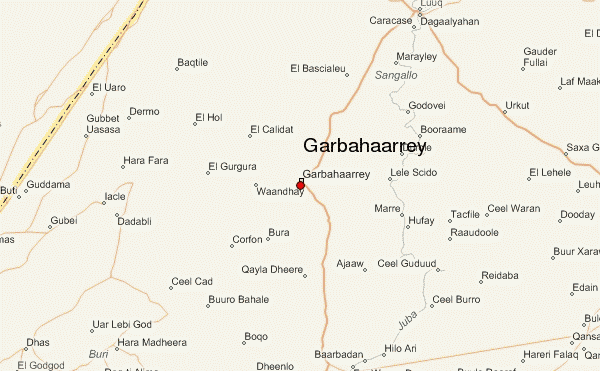Cultural Significance Of Garbahaarrey In Somali Heritage
Share
Garbahaarrey, a town located in the southwestern region of Somalia, is not just a geographical location; it is a vibrant tapestry of history, culture, and community. This article aims to highlight the cultural significance of Garbahaarrey within Somali heritage, exploring its historical roots, social dynamics, and the role it plays in the broader context of Somali identity.

Historical Background
Garbahaarrey has a rich history that dates back centuries. Originally a settlement for pastoralists, it has evolved into a significant urban center. The town's name itself is derived from the Somali words "garba" meaning "to gather" and "haarey" meaning "to protect," symbolizing its role as a safe haven for communities. The historical significance of Garbahaarrey is reflected in its architecture, local traditions, and the stories passed down through generations.
Key Historical Events
Several key events have shaped Garbahaarrey's history:
-
Colonial Era: During the colonial period, Garbahaarrey became a focal point for trade and interaction between different Somali clans and foreign powers. This era introduced new cultural influences that blended with traditional Somali practices.
-
Civil War: The Somali civil war in the late 20th century had a profound impact on Garbahaarrey, leading to significant demographic changes and challenges. However, the resilience of its people has allowed the town to rebuild and maintain its cultural identity.

Cultural Practices and Traditions
Garbahaarrey is a melting pot of Somali culture, where traditional practices are preserved and celebrated. The town is known for its vibrant festivals, music, and dance, which play a crucial role in community bonding and cultural expression.
Festivals and Celebrations
One of the most significant cultural events in Garbahaarrey is the Maulid celebration, which commemorates the birth of the Prophet Muhammad. This event brings together community members for prayers, feasting, and cultural performances, reinforcing the town's Islamic heritage.
Traditional Music and Dance
Music and dance are integral to Somali culture, and Garbahaarrey is no exception. Traditional instruments like the oud and daaso are commonly used in performances. The dhaanto, a popular dance form, showcases the town's rich artistic heritage and is often performed during weddings and communal gatherings.
Social Structure and Community Life
The social fabric of Garbahaarrey is woven from strong familial ties and communal values. The town is home to various clans, each contributing to the rich cultural mosaic of the area. This diversity fosters a sense of unity and cooperation among residents.
Clan Dynamics
Clan affiliations play a significant role in the social structure of Garbahaarrey. Each clan has its own customs and traditions, which are respected and celebrated. This diversity is a source of strength, allowing for a rich exchange of cultural practices and ideas.
Community Initiatives
Community initiatives in Garbahaarrey focus on education, health, and economic development. Local organizations work tirelessly to improve living conditions and promote cultural heritage. These efforts are crucial in preserving the town's identity and ensuring a bright future for its residents.
Garbahaarrey's Role in Somali Identity
Garbahaarrey is not just a town; it is a symbol of Somali resilience and cultural pride. The community's ability to maintain its traditions while adapting to modern challenges speaks volumes about the strength of Somali heritage.
Preservation of Language and Culture
The Somali language is a vital component of identity, and Garbahaarrey serves as a hub for linguistic preservation. Local schools and community centers promote the use of Somali in education and daily life, ensuring that future generations remain connected to their roots.
A Beacon of Hope
In a world where cultural identities are often threatened, Garbahaarrey stands as a beacon of hope. The town's commitment to preserving its heritage while embracing change is a testament to the enduring spirit of the Somali people.
Visiting Garbahaarrey
If you are considering a visit to Garbahaarrey, you will find a welcoming community eager to share its rich heritage. The best time to visit is during the dry season, from November to March, when the weather is pleasant and conducive to outdoor activities.
Key Attractions
-
Local Markets: Experience the vibrant atmosphere of Garbahaarrey's markets, where you can find traditional crafts, textiles, and delicious Somali cuisine.
-
Historical Sites: Explore the remnants of colonial architecture and ancient structures that tell the story of Garbahaarrey's past.
-
Cultural Performances: Attend local events to witness traditional music and dance, immersing yourself in the cultural richness of the town.
Accommodation and Travel
For a comfortable stay, consider booking accommodations through Hotels & Flights. Additionally, you can arrange transfers to and from Garbahaarrey using this link.
Conclusion
Garbahaarrey is a vibrant testament to the resilience and richness of Somali heritage. Its cultural significance extends beyond its geographical boundaries, embodying the spirit of a people who cherish their history while looking forward to the future. As you plan your visit, remember that you are not just exploring a town; you are engaging with a living culture that has thrived for generations. Embrace the warmth of its community, the beauty of its traditions, and the stories that make Garbahaarrey a unique gem in the heart of Somalia.



